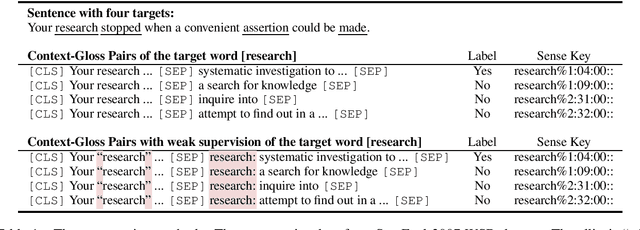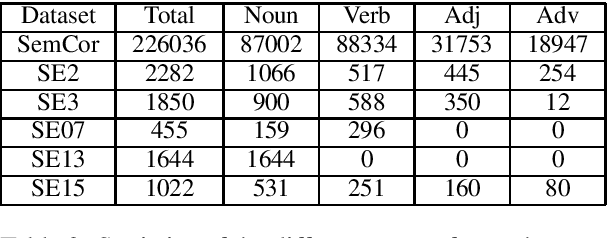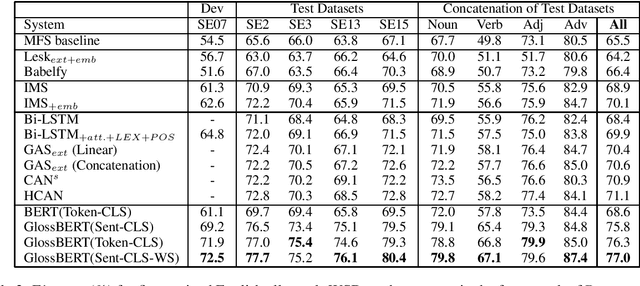GlossBERT: BERT for Word Sense Disambiguation with Gloss Knowledge
Paper and Code
Aug 20, 2019


Word Sense Disambiguation (WSD) aims to find the exact sense of an ambiguous word in a particular context. Traditional supervised methods rarely take into consideration the lexical resources like WordNet, which are widely utilized in knowledge-based methods. Recent studies have shown the effectiveness of incorporating gloss (sense definition) into neural networks for WSD. However, compared with traditional word expert supervised methods, they have not achieved much improvement. In this paper, we focus on how to better leverage gloss knowledge in a supervised neural WSD system. We construct context-gloss pairs and propose three BERT-based models for WSD. We fine-tune the pre-trained BERT model and achieve new state-of-the-art results on WSD task.
 Add to Chrome
Add to Chrome Add to Firefox
Add to Firefox Add to Edge
Add to Edge